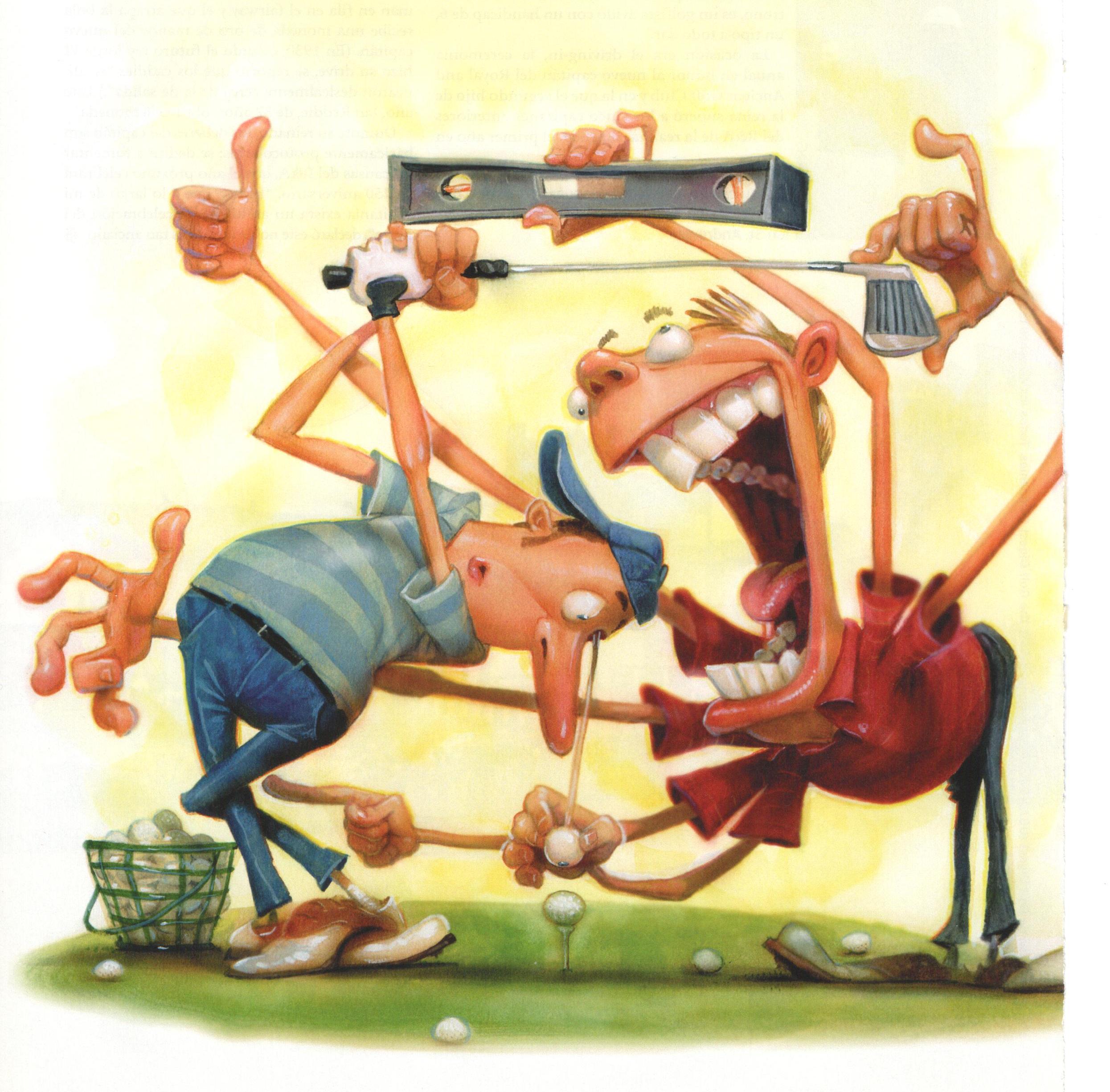
Talking in the 19th Hole
DRIVER. By the nature of golf and following the pros’ instructions, players tend to have an overload of attentional demands that impairs their attention. This means that the player makes the swing thinking about all the pro’s indications: athletic posture, grip smooth, turn shoulders, pause at the top, come from the inside, stable legs, square face, etc.

Swing thoughts during the shot exist because we are highly conditioned to work on our swing mechanics. There is nothing wrong with swing thoughts. They are among the most valuable tools a player has to improve. But its place is on the driving range or during a casual round of swing experimentation, not during a competitive round. Thinking about swing during a round is a recipe for failure. The more you think about how you want to hit the ball, rather than where you want to hit it, the more difficult you will make the game. Swing thoughts take your mind off the target.
It’s easy to get addicted to swing thoughts. If you’ve been successful playing with one before, you may feel like you won’t be able to play without one. It is human nature to want to fix the cause of a bad shot. The hurdle that players who rely on swing thoughts have to overcome is confidence. If you have good fundamentals, you already know how to swing well. All you need is a mental commitment to the target and the confidence that your body will respond. You must be convinced that you have practiced the swing enough to give it a vote of confidence.
The best thought on the swing is none, but many players have been taught to have them. If you need to think about your swing, you shouldn’t stop it. The thoughts should focus on the target, reinforce confidence in the swing, and suggest effortless movement.
The recommendation is that you choose one thought per round or one thought for the different shots. An exercise for managing attentional demands overload called «hit the right button» involves choosing a focused thought by shot type. Thought must promote the shot to work. For example:
• Shot: putt.
– Focus: hit with the sweet spot.
• Shot: chip.
– Focus: hold wrists through impact.
• Shot: pitch.
– Focus: turn in the forward swing.
• Shot: bunker.
– Focus: slide the clubhead under the ball.
• Shot: irons.
– Focus: make a controlled swing, and with rhythm.
• Shot: driver.
– Focus: hit at 85% of full force.
Exercise: write your focused thought for the following shots:
• Shot: putt.
– Focus:
• Shot: chip.
– Focus:
• Shot: pitch.
– Focus:
• Shot: bunker.
– Focus:
• Shot: irons.
– Focus:
• Shot: driver.
– Focus:
